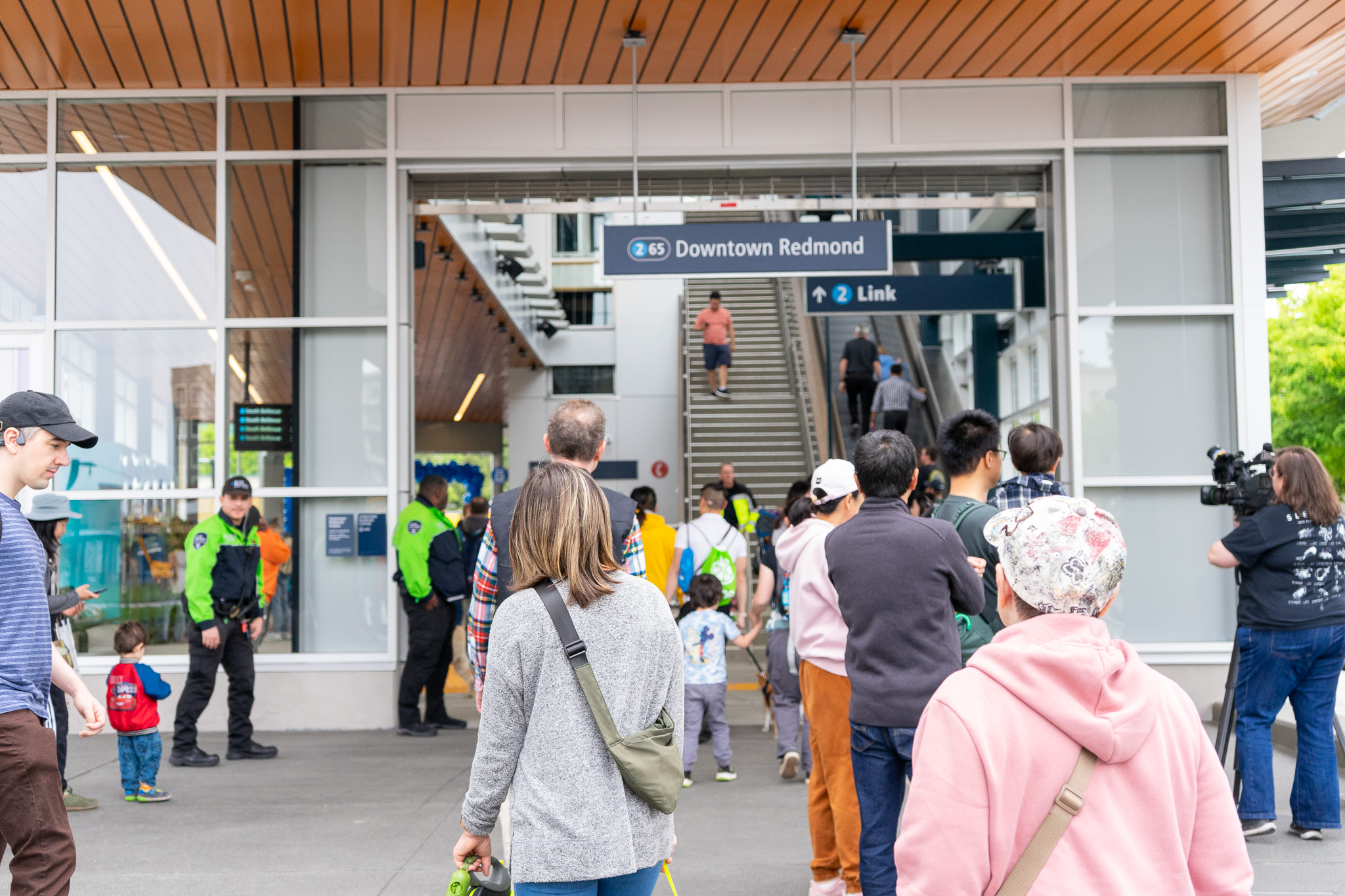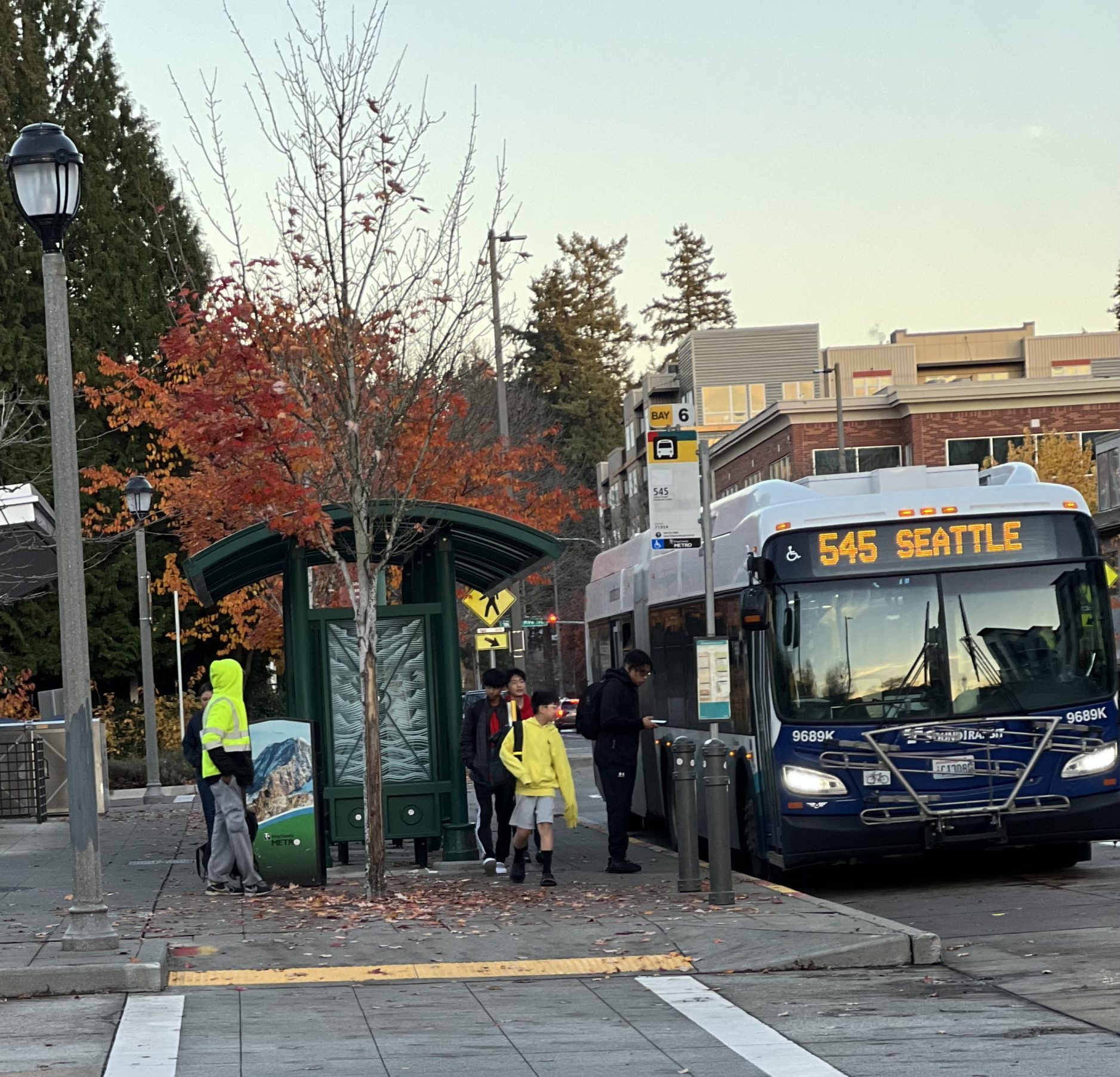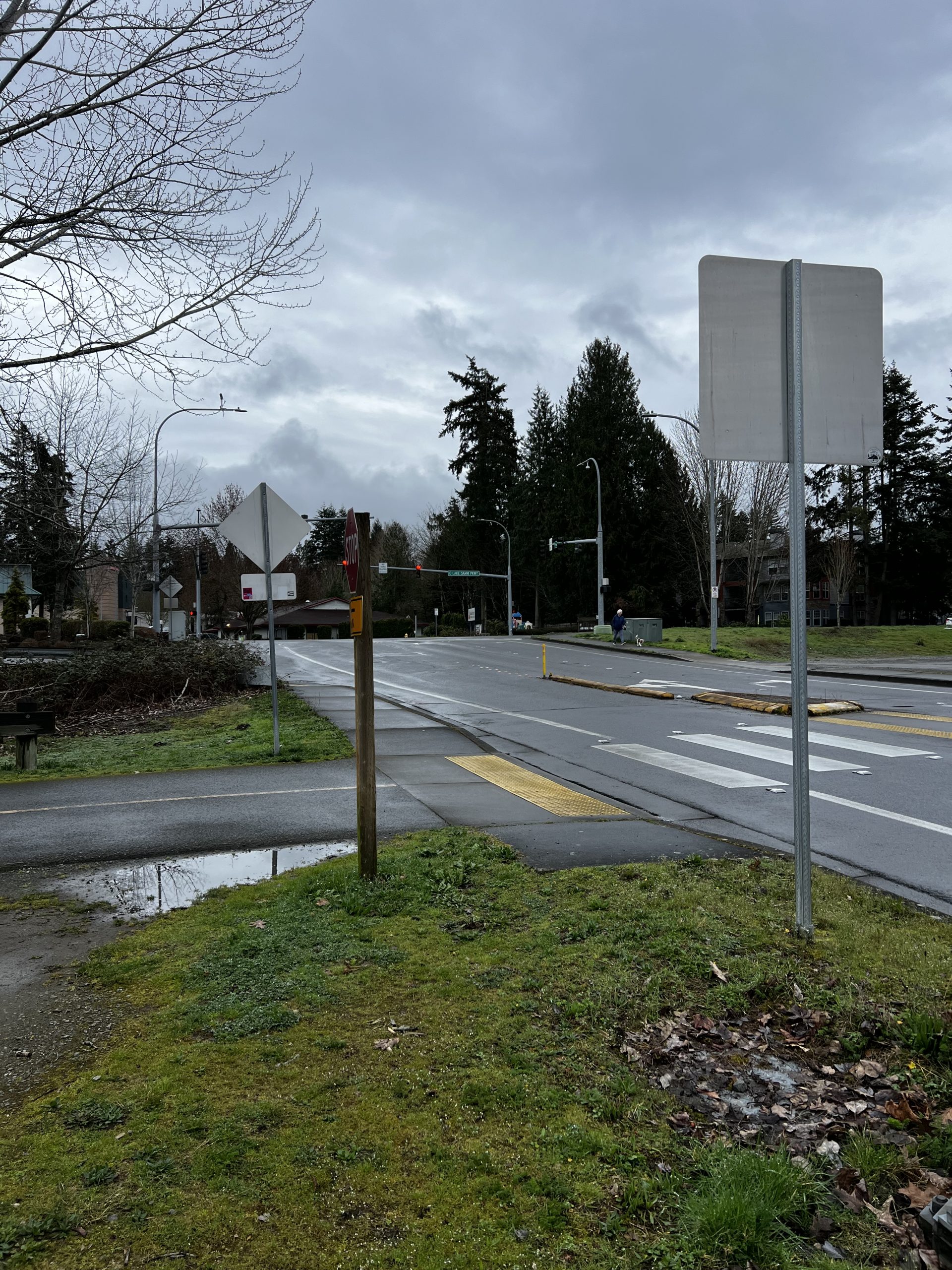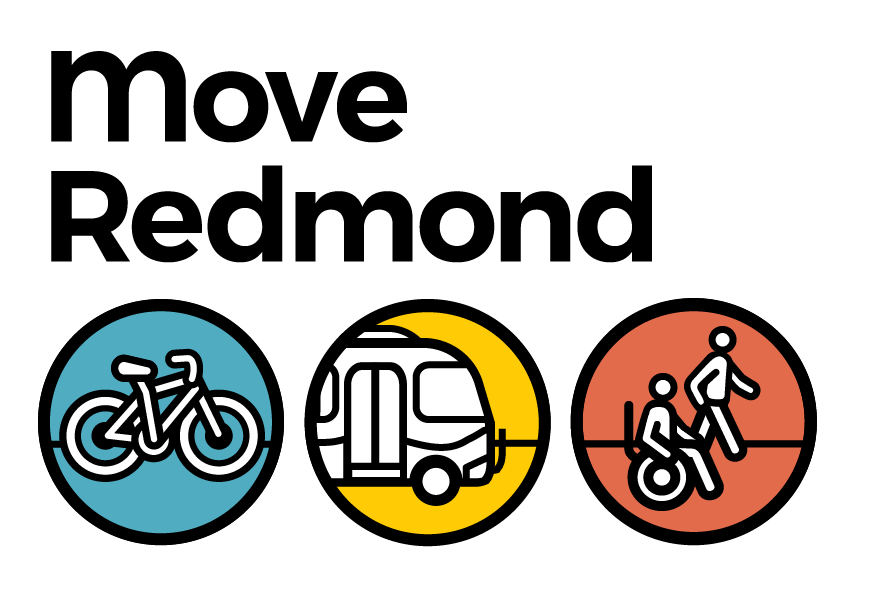What Makes Transit Feel Safe?
By Maritza Lauriano & Kelli Refer
Transit has had a long standing narrative that only poor or houseless individuals ride transit, it’s a magnet for crimes, therefore it’s not safe and people need to drive to avoid the “dangers” of transit. When we talk about safety on transit, we have to start by asking – what do we really mean by safe? For many, the term transit safety conjures fear rooted in media narratives but oftentimes, these stories of crime and discomfort overshadow the lived experiences of frequent transit riders.
“Riding public transit truly allows you to get to know your community. If you ever want to connect in a real way with your city or neighborhood – ride public transit”- Christine A, who submitted her transit story through Move Redmond’s Our Commute, Our Story program.
The long standing narrative of transit being unsafe, is built on racialized assumptions, class bias, and a car culture that paints car ownership as personal success and a part of the American dream. When people drive they have freedom and safety. But safety from whom?

There are rare moments when something bad happens on the bus. Those events are scary and rightfully make the news. However, it’s important to note that public transit is a social space, where we can sit next to people with very different backgrounds and lived experiences. This is part of the beauty of public transit, it brings people together. Public transit is also a reflection of our society at large and there are a lot of people who are struggling, and transit brings us face to face with that truth. Improving transit safety requires more investment in our society to help address the underlying causes of violence, not simply throwing more security guards on transit.
Both King County Metro and Sound Transit have started fare enforcement again. Both agencies are looking at an approach that helps people who can’t pay fare with resources, like ORCA LIFT cards and access to social services. This is a good step in supporting our unhoused neighbors who rely on public transit as a place to sit and cool off from the Summer heat or stay dry during rainy days. Ultimately it is not the job of our transit agencies to fix the compounding crisis of homelessness and mental health, but it is a place where those societal problems are visible. Transit safety shouldn’t be measured by how many Transit Security Guards are present on the bus, but by whether riders, regardless of age, income, or ability can get to their destination with care and ease.
Over the last couple of months, Move Redmond conducted a survey to better understand how people experience riding transit, including what would make them feel more safe and comfortable. With ongoing conversations about safety and public transit, especially in the wake of the tragic loss of bus driver Shawn Yim, it’s important to listen to transit riders.
We received 38 responses, and though it may be a small sample, each story helps paint a full picture of what transit means to people in our community, and what limits them from riding transit.
Who is Riding Transit?
The simple answer is, everyone! Transit serves accountants, engineers, project managers, health care workers, parents, youth and many more. Transit is for you, your friends and family. For some, public transit is how they choose to move around, while for others, it’s the only option they have that allows them to move freely.
“Public transit gives me freedom during my ride to just relax, get some work done or read a book and not have to worry about traffic or finding a parking spot. Also, it’s good for the planet” – Ravinder B., Move Redmond’s Our Commute, Our Story Story Submission
Something that stood out on the survey was that a majority of the respondents (57%) use transit for more than commuting to work, but for recreational purposes such as parks, events, or entertainment. This challenges another outdated assumption that transit is primarily for 9-5 commuters, and underscores the importance of all-day, all-week service and not just traditional 9am-5pm peak hours.

Our survey showed a variety of ridership patterns:
- 27% rides transit a few times a week (2-4 days/week)
- 18% rides daily (5+ days a week)
- The rest ride occasionally, rarely, or not at all
Increasing ridership is one of many steps to improving the transit experience and shifting the narrative to reflect who truly rides transit. So we may ask, why don’t people ride transit? Below are the top 3 responses in Move Redmond’s survey:
- Service is infrequent and unreliable
- Transit does not go where I need to go
- Transit is too slow compared to other options
Historically, transit has been shaped by exclusion- redlining, segregation, and systemic racism. It is no surprise that the creation of highways not only displaced thousands of black and brown communities but literally created a barrier to keep black and brown communities away from the white suburbs and “safe” from black migration. When we look at the history of transit and disinvestment of black and brown communities, they go hand in hand with each other. With the creation of highways, came the disinvestments of transit, and the increase of car ownership.
Though circumstances have improved, we continue to face the impacts of the institutional racism embedded in transit. When transit systems, by design, can reinforce racial segregation keeping Black and Brown communities from moving freely and away from white suburbs and access to opportunities. Without connected communities transit is less reliable, infrequent and slow. Additionally, when transit is mostly tailored to traditional 9-5 commuters, and is limited to those distinct hours, it limits transit as a choice to those who are looking to ride outside the traditional working hours. When the route you need doesn’t run on weekends, stops running after the morning or evening peak, it’s not only discouraging but unreliable.
“I have to walk a ways from my home to get to the nearest bus stop, so I don’t often use this form of transportation unless my destination is directly on the route. It is unsafe to travel by bicycle during the early mornings [and] unsafe to bike home due to amount of construction in my area. Walking home is my best option, as the nearest bus stop from my workplace also requires a long walking, and wouldn’t be any quicker. There are not enough/any buses running at the times I need them.” – Melissa D., Move Redmond’s Our Commute, Our Story Story Submission
Safety Starts Before the Bus Ride – First and Last Mile Connections
One of the most important takeaways is that for many riders, the most unsafe part of the journey isn’t the transit ride itself, but getting to the bus stop.
When asked what improvements would make their transit trips more comfortable and safe:
- 62% responded More Frequent Service
- 56% responded More Reliable Service (fewer delays, more predictable scheduling)
- 40% responded better lighting at bus stops and transit stations
- 35% responded more security presence
Frequent and reliable service for public transit makes it a more welcoming and useful service for all people in the region. These top 3 responses clearly show that people want reliable access to the places they need to go without waiting a long time or having uncertain connections. It is important not to discount the importance of frequent service in conversations around safety.

Some respondents expressed that their journey is easy because they only walk about 5-10 min to their bus stop and are able to make their bus on time and their area is frequently served. Others shared having to walk 15 min or more to get to their bus stop where sometimes the area has poor lighting, ongoing construction, or their bus stop has been shut down and now have to walk further when using transit. Some feel comfortable using their bike to get to their bus stop and even though there may be bike lanes on the road, not everyone feels safe or confident using them, and are left with walking as their only option. Pedestrian safety challenges are amplified by people with mobility challenges or in wheelchairs. Access to curb cuts, even sidewalks and crossing times that accommodate slower moving people are critical to improving transit access, too.
It’s these “first/ last mile” gaps and infrequent transit that make or break the transit experience for many. If you miss your bus after walking a long way, and the next bus isnt for another 30 -60 minutes and you’re having to wait at a dark bus stop – it’s not just inconvenient but disencouraging.
For our regional transit system to thrive we need safe access to transit for people who walk, bike and roll. Bus stops need to offer a place to sit with shelter from the drizzle. People need places to go to the bathroom. Things like lighting, benches and safe crossings are not tertiary to our transit system but rather integral features that lead to a safer and better functioning system.
Rethinking what “Transit Safety” Means
Too often, transit safety is narrated around isolated incidents and are framed around fear. But when we listen to riders, we hear that transit safety is just as much about pedestrian and biking infrastructure and transit frequency & reliability as it is about the ride itself.
So we are left with the question: Where does transit safety really begin? Is it at the bus stop? On the bus ride itself? Or on the sidewalk/bike lane that paves the path to your bus stop?
